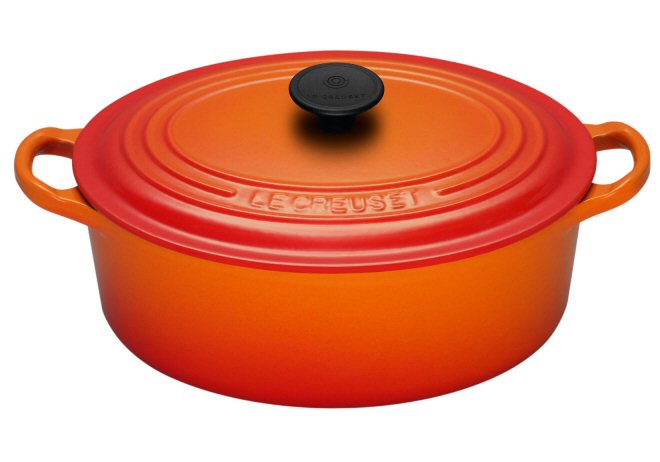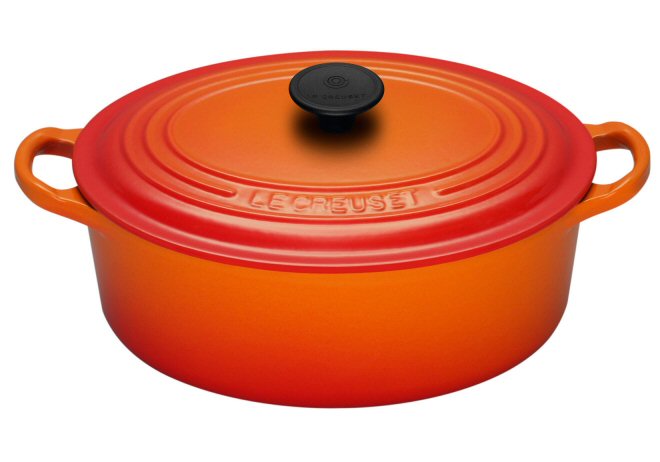oliver27
Assistant Cook
Hi there,
Cooking noob here!
I have a question regards a 24cm Le Creuset casserole dish I received for Christmas. I have looked for recipes on BBC GoodFood website (I'm from UK), and a lot of chicken casserole/one-pot dishes (linking in with trying to eat healthier meats in 2015!). I have noticed that a lot of these dishes require to simmer on the hob instead of cooking in the oven. The whole reason I wanted a Le Creuset dish was to use the oven for stews and casseroles. Thus, I have a couple of questions...
1. If the recipe requires for example 40 minutes simmering on the hob, is it ok to replace this with cooking in the oven instead?
2. If yes, then what heat (in centigrade) would I set to achieve a 'simmering' (n.b. fan oven)
3. What is more efficient from an electricity bill point of view? Electric ceramic hob simmering or electric fan oven?
4. Not really related, but I'll throw in anyway - how versatile is my Le Creuset casserole dish? I.e. can I make one-pot dishes in it easily, even if the recipe doesn't require an oven? I ask because I have a cheaper big pan that is more non-stick and I would have thought better for frying meat etc. as it has a non-stick surface (although I may be completely wrong about this!)
Appreciate any advice.
Oliver
Cooking noob here!

I have a question regards a 24cm Le Creuset casserole dish I received for Christmas. I have looked for recipes on BBC GoodFood website (I'm from UK), and a lot of chicken casserole/one-pot dishes (linking in with trying to eat healthier meats in 2015!). I have noticed that a lot of these dishes require to simmer on the hob instead of cooking in the oven. The whole reason I wanted a Le Creuset dish was to use the oven for stews and casseroles. Thus, I have a couple of questions...
1. If the recipe requires for example 40 minutes simmering on the hob, is it ok to replace this with cooking in the oven instead?
2. If yes, then what heat (in centigrade) would I set to achieve a 'simmering' (n.b. fan oven)
3. What is more efficient from an electricity bill point of view? Electric ceramic hob simmering or electric fan oven?
4. Not really related, but I'll throw in anyway - how versatile is my Le Creuset casserole dish? I.e. can I make one-pot dishes in it easily, even if the recipe doesn't require an oven? I ask because I have a cheaper big pan that is more non-stick and I would have thought better for frying meat etc. as it has a non-stick surface (although I may be completely wrong about this!)
Appreciate any advice.
Oliver


